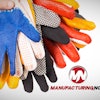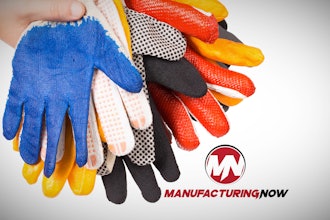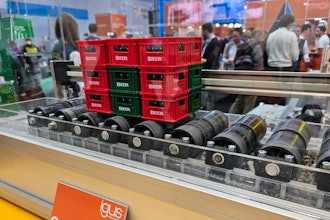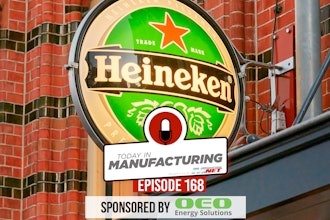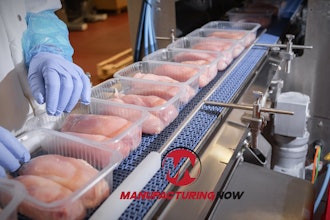In this Plant Perspectives, staff speak with industry experts to hear their perspectives on critical issues within the processing marketplace. This month, Chem.Info asks:
1.) How can one speed up product line cleaning and changeover in powder bulk material handling?
2.) How can one minimize combustible dust hazards in powder bulk material handling?
 Todd D. Messmer, Senior Applications Engineer, Schenck AccuRate
Todd D. Messmer, Senior Applications Engineer, Schenck AccuRate
1.) “With respect to bulk solids metering equipment, such as volumetric/gravimetric screw or vibratory feeders, or even weigh belts, there are two major considerations to factor in when attempting to speed up cleaning and changeover: quick disassembly and investing in spare product contact components.
“If you are in the market for new equipment, look for equipment features like non-process access and toolless design. Non-process access allows you to remove major components for cleaning — such as feed screws or internal flexible hoppers — without having to disconnect the feeder from upstream or downstream processes.
“If your equipment has those features already, make sure that they are easily accessible. Do you have ample room to be able to pull a flexible hopper or a feed screw out of a feeder? If a motor swings out of the way for access to these components, are there any interferences preventing you from doing it?
“As the name implies, toolless design permits you to disassemble a piece of equipment without the use of tools. Consider features like tri-clover or V-band clamps over hose clamps that require a screwdriver to loosen them. If totally toolless design is not available, can you get away with just one size of wrench or screwdriver to disassemble the piece of equipment, thus limiting the number of tools that may get lost, or worse yet, inadvertently dropped into the process?
“Keep one or several sets of spare product contact components readily available, such as feed screws, feed nozzles, flexible hoppers, flexible connectors, dust socks or belts for weigh belts. As you remove contaminated components, replace them with these readily available spare components. This gives you less downtime and more time to invest in cleaning the contaminated components.”
2.) “There are many equipment features available that can minimize or even potentially eliminate combustible dust hazards. A few of the most popular are flexible connectors and integral dust filters. Flexible connectors not only isolate gravimetric or volumetric equipment from upstream and downstream vibrations, but they also provide dust containment when properly installed.
“Many manufacturers offer ancillary self-contained filters like bin vents, which are pulsed with clean dry air, or at times even nitrogen, depending on the application. While dust socks bind up over time, this pulse knocks material off the filters — dropping it right back into the process.
“Additionally, bulk bag unloaders can benefit from dust containment hoppers and integral dust filters. They allow you to change out a bulk bag while the filter unit is running. When properly designed, the dust filter collects material fines and dust while the operator changes out the bulk bag. Once the bag has been changed, the filter either automatically or manually pulses to clear the filter, again dropping material fines and dust back into the process.”
For more information, please visit www.accuratefeeders.com.
 William Chapman, Lab Manager, Sturtevant Inc.
William Chapman, Lab Manager, Sturtevant Inc.
1 & 2.) “Having the proper dust control system (portable dust hood, vacuum system, etc.) while cleaning or changing over the equipment product line is a must.” Chapman also stresses how important it is to be aware of:
- Occupational health risks — workers are at risk from fine airborne particles entering into the respiratory tract. They are recommended to wear respiratory masks and whatever additional personal protective equipment may be necessary.
- Dust toxicities — workers should conduct a review of the material safety data sheet of the substance being cleaned out of the system, plus air quality monitoring should be an ongoing process. Personnel working in cleaning and changeover of lines are recommended to protect themselves by wearing fully dust-resistant clothing.
- Static electricity — it can be your worst enemy some times. To minimize the possibility of fire and explosion, grounding comes highly recommended.
- Oxygen — all sources of oxygen should be deactivated.
- Inert systems — workers are recommended to use self-contained breathing apparatus in systems requiring inertness for cleaning.”
For more information, please visit www.sturtevantinc.com.
 Greg Patterson, Vice President, Hapman
Greg Patterson, Vice President, Hapman
1.) “When an application requires frequent cleaning and/or changeover, it is essential to consider the design of the equipment, and how easy or difficult it will be to disassemble and reassemble. For example, it may be easy to take a coupling off, but how straightforward is it to put back with all of the gaskets properly in place?
“If it is problematic to reassemble, it is very likely the assembly process will not be completed as designed. In the case of our example, the gasket will be left out. Not only will the equipment not function as expected, but valuable materials and the plant environment can also be compromised.”
2.) “There are several ways in which to minimize combustible dust hazards when handling powder bulk materials. In addition to ensuring the method of conveying material is dust-tight and purged of the oxygen required for an explosion, you should look for equipment designed with materials that reduce the risk of sparks.
“Hapman always pays attention to the potential for metal-to-metal contact to create sparks. If such cases exist, stainless steel or other materials are used.”
For more information, please visit www.hapman.com.
What’s your perspective?
Voice your hard-earned opinion for a chance to be featured in the March issue of Chem.Info. Simply e-mail your response to the following prompts, a headshot, your name, title and company to Chem.Info editor Carrie Ellis via [email protected]:
- Describe in detail the best overall process and/or equipment to track regulated end-products.
- Describe in detail the best overall process and/or equipment to inspect regulated end-products.

